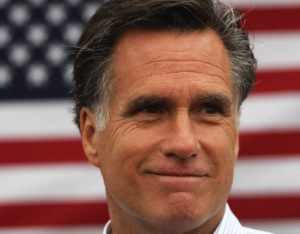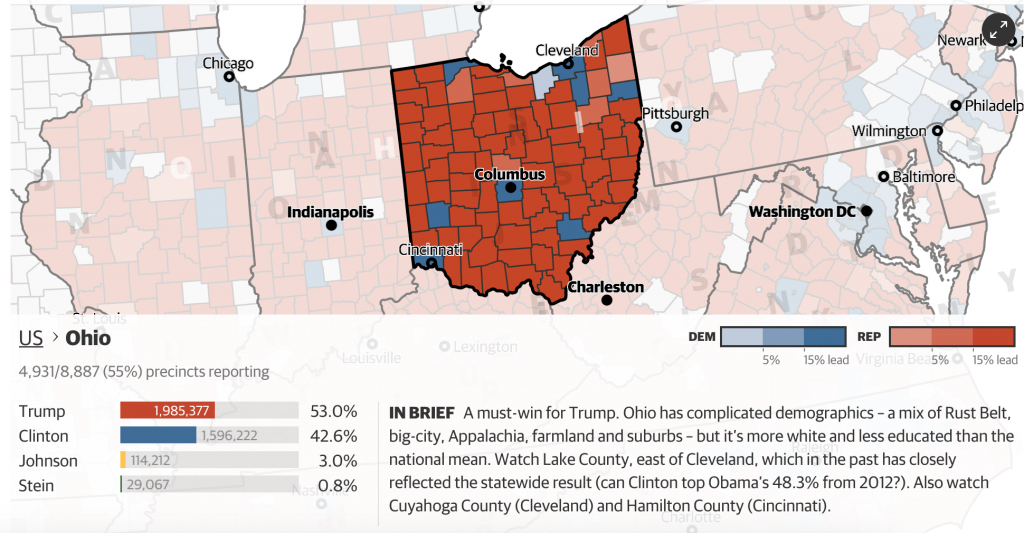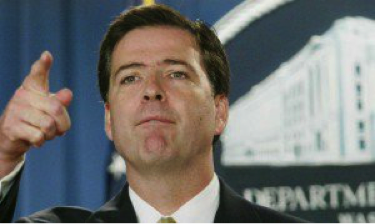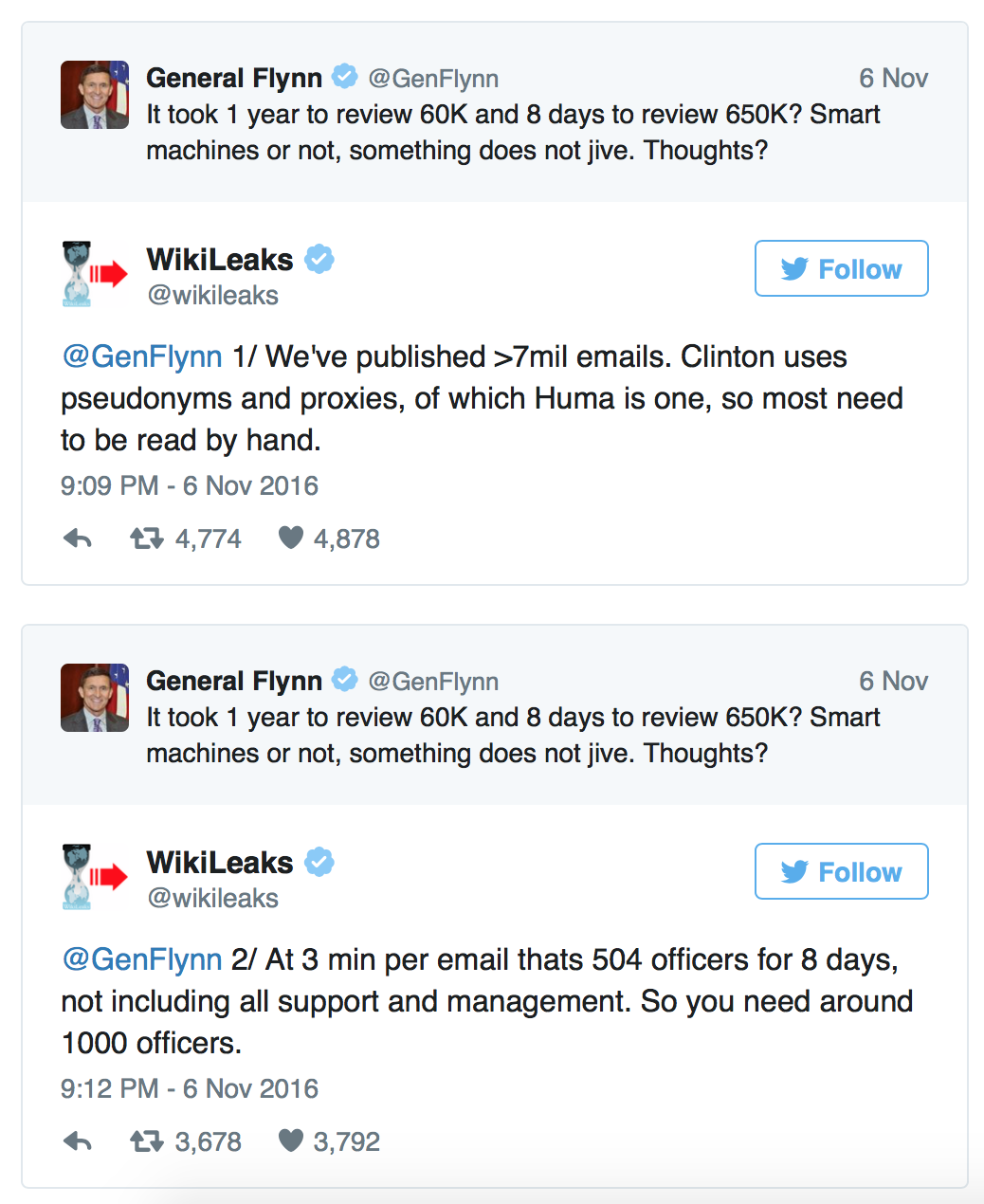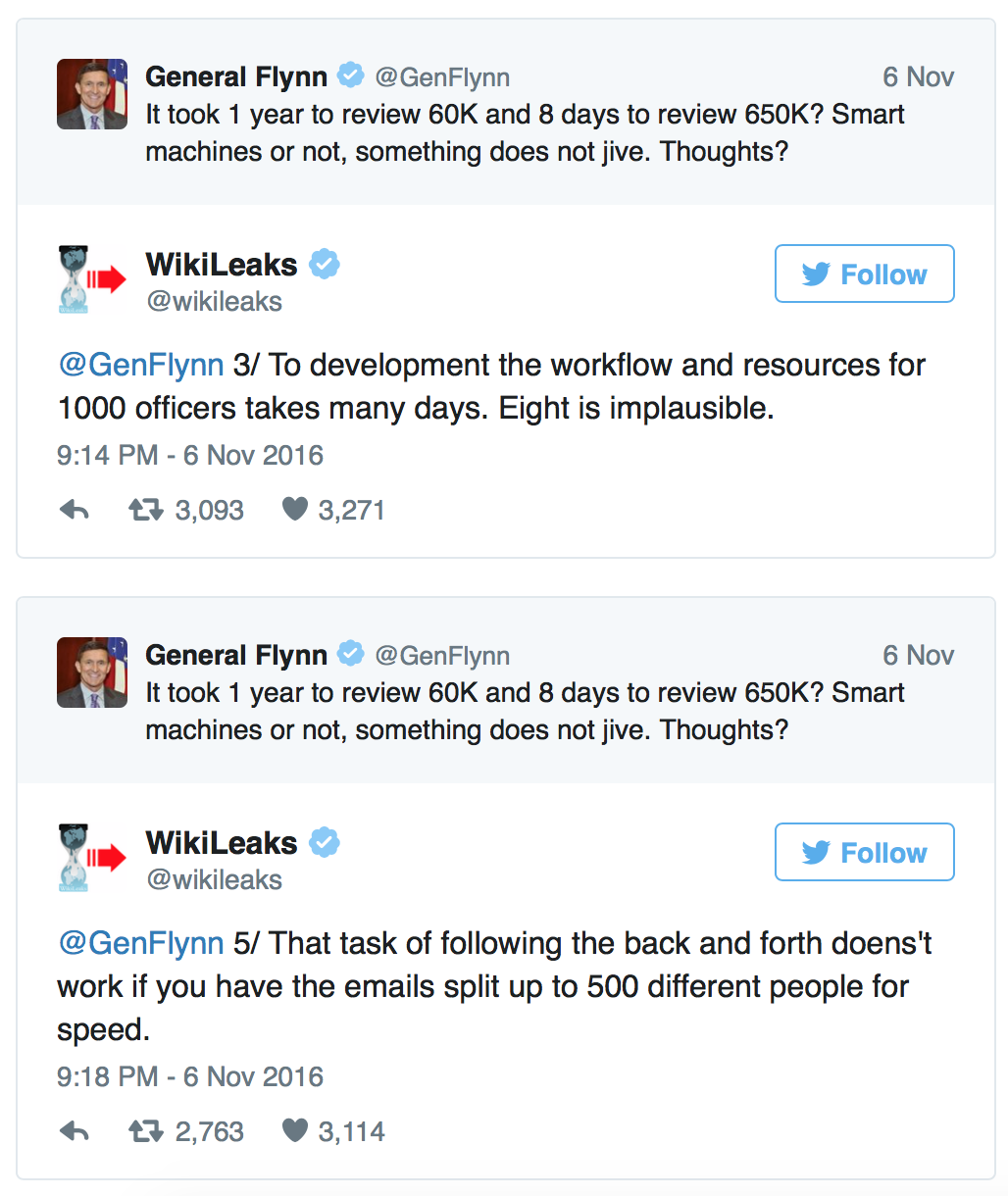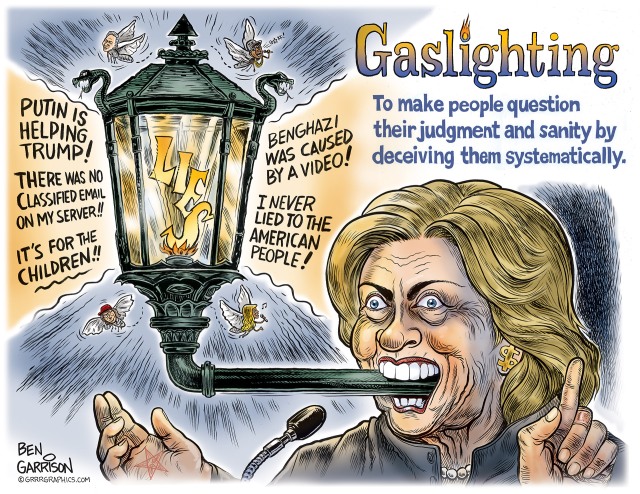Recalling the 2004 elections. Prof. Michael Keefer’s January 2005 analysis at the outset of GWB’s Second term. Original article published in January 2005
So who ever thought the 2004 U.S. presidential election had the remotest chance of being honest and democratic?
Not, one might guess, the electronic voting security experts like Ken Thompson, Roy Saltman, Rebecca Mercuri, Bruce Schneier, Doug Jones, Victoria Collier, Aviel Rubin, Lynn Landes, and Bev Harris, who have for years been warning that the new voting technology coming into use in the United States offers unprecedented opportunities for electoral fraud.[1]
Probably not Osama bin Laden, who made his much-anticipated Jack-in-the-Box video appearance three days before polling day: wearing a gold-lamé hospital gown in front of a blank shower curtain, and with a nose that looked to have been quite recently punched flat, he landed some anti-Bush shots that Rush Limbaugh and the other ring-tailed roarers of the American right were happy to interpret as a last-minute endorsement of John Kerry.[2]
And certainly not Republican Congressional Representative Peter King, who made an equally notable video statement on the afternoon of November 2nd, long before the polls closed, in the course of a White House function that seemed to have put him into a celebratory mood. “It’s already over,” he told the interviewer. “The election’s over. We won.” Asked how he knew at that early hour, King replied: “It’s all over but the counting. And we’ll take care of the counting.”[3]
One of the people who took care of the counting–and who was responsible as well for some of the most decisive crookedness of the election, and the most flagrant illegalities of the post-election cover-up–is J. Kenneth Blackwell, Ohio’s Republican Secretary of State.
To give the man his due, Blackwell is at once more discreet and more grotesquely Orwellian than the tipsy Congressman King. Rather than flaunting his election-stealing prowess, he has preferred to boast in a Washington Times op-ed that while the election in Ohio was not in all respects perfect (“a seven-hour wait” outside polling stations, he acknowledges, “is clearly unacceptable”), it was nonetheless “perfectly inspiring–a testament to the strength and power of our democratic system, the commitment of American voters to have their voices heard and the integrity of the process that encouraged participation and demanded fairness.”[4]
Prior to the election, this versatile ironist was reported to be “coming out strong” in support of the proposal to ban same-sex marriage: in late October, Blackwell made an appearance with Pastor Rod Parsley, president of “The Center for Moral Clarity,” in the course of which he edified “an energized crowd” in the “Cathedral of Praise” by telling them that the notion of same-sex couples “even defies barnyard logic […] the barnyard knows better.”[5]
But Blackwell’s talent–and his affliction–goes beyond irony or hypocrisy into a more permanent state of inversion that one might think of as resembling the punishment reported by the poet Dante for religiously inflected fraud.[6] In another speech in the same week of October–the context this time being his refusal to obey a federal court order requiring him to comply with the Help America Vote Act–Blackwell compared himself, in his willingness to endure the unlikely punishment of imprisonment, to Mohandas Gandhi, Martin Luther King, and the Apostle Paul. A spokesman for the Ohio Democratic Party’s Voter Protection Program offered the appropriate rejoinder: “Many civil rights leaders went to jail to defend the right to vote. If this official wants to go to jail to thwart it, that would be unfortunate.”[7]
The talented Mr. Blackwell has garnered praise for having launched “The Ohio Center for Civic Character: A Citizen Education Initiative of the Ohio Secretary of State.” The Center’s goal, “a revolution of character-building in our great state,” is to be achieved by providing “today’s generation of leaders” with “a shared vocabulary of character-building ethics” which Blackwell calls “Uncommon Sense.”[8] It may come as no surprise that one of his most recent public appearances prior to the Bush inauguration was a lecture, delivered on January 12th, 2005 to an exclusive audience at the Scioto Country Club in rural southern Ohio, on the subject of “Ethics in Leadership.”[9]
Like the unsavoury Katherine Harris, who was Florida Secretary of State in 2000 and simultaneously state Chair of the Florida Bush-Cheney campaign, Kenneth Blackwell occupied a strategic double position as Co-Chair of the Ohio Bush-Cheney campaign and Secretary of State in what analysts correctly anticipated would be the key swing state of the 2004 election. From this position, a growing body of evidence shows, he was able to oversee a partisan and racist pre-election purging of the electoral rolls,[10] a clearly partisan reduction of the number of voting precincts in counties won by Gore in 2000 (a move that helped suppress the 2004 Democratic turnout),[11] a partisan and racist misallocation of voting machines (which effectively disenfranchised tens of thousands of African-American voters),[12] a partisan and racist system of polling-place challenges (which together with electoral roll purges obliged many scores of thousands of African-Americans to vote with ‘second-class-citizen’ provisional ballots),[13] and a fraudulent pre-programming of touch-screen voting machines that produced a systematic ‘flipping’ of Democratic votes into Bush’s tally or the trash can.[14]
In a nation that enforced its own laws, the misallocation of voting machines–a clear violation of the equal protection provisions of the Fourteenth Amendment to the U.S. Constitution–would alone have sufficed to invalidate the Ohio election.
Having overseen one of the more flagrantly corrupt elections in recent American history, Blackwell and his Republican machine proceeded to “take care of the counting”–which involved a partisan and racist dismissal of scores of thousands of African-American ballots as “spoiled,”[15] a flagrantly illegal “lock-down” of the vote-tallying process in Warren County on the transparently false grounds of a supposed terrorist threat,[16] massive electronic vote-tabulation fraud in this and other south-western Ohio counties,[17] and marginally less flagrant but evidently systematic forms of ‘ghost-voting’ and vote theft elsewhere in the state.[18]
Blackwell then saw to it (with the active assistance of partisan Republican judges, and the passive assistance of a strangely supine Democratic Party) that no even partial recount–let alone anything resembling a voting-machine or vote-tabulator audit–could get under way prior to the selection of Ohio’s Republican electors to the Electoral College.[19]
He also did his utmost to block public access to election data, ordering the Boards of Election in all eighty-eight Ohio counties to prevent public inspection of poll books until after certification of the vote, which he delayed until December 6th.[20] On December 10th, his Election Administrator, Pat Wolfe, intervened to prevent analysis of poll-book data by ordering, on Blackwell’s authority, a renewed “lock-down” of voting records in Greene County and the entire state. (According to Ohio Revised Code Title XXXV Elections, Sec. 3503.26, such records are to be open to the public; Ohio Revised Code Sec. 3599.42 explicitly declares that any violation of Title XXXV “constitutes a prima facie case of election fraud….”)[21]
Bizarrely enough, on the night following the statement to election observers in Greene County that all voter records in the State of Ohio were “locked down” and “not considered public records,” the Greene County offices were left unlocked: when the same election observers returned at 10:15 on the morning of Saturday, December 11th, they found the building open, a light on in the office (which had not been on when it was closed on the evening of the 10th), and all of the poll books and voting machines unsecured.[22]
When at last the Green and Libertarian parties’ lawyers were able to obtain a recount, Blackwell presided over one that was fully as corrupt as the election had been. Sample hand recounts were to be carried out in each county, involving randomly-selected precincts constituting at least three percent of the vote; any disagreements between the sample recount and the official tally were supposed to prompt a full county-wide hand recount. According to Green Party observers, however, a substantial proportion of Ohio’s eighty-eight counties broke the law by not selecting their hand-recount precincts randomly.[23] There is evidence, most crucially, that Triad Governmental Systems, the private corporation responsible for servicing the vote-tabulation machines in about half of the state, tampered with selected machines in counties across Ohio immediately before the recount in order to ensure that the sample recount tallies would conform with the official vote tallies.[24] (Triad’s technicians knew which machines to tamper with because, it would appear, Board of Election officials, in open violation of the law, told them which precincts had been pre-selected.)
Despite this widespread tampering, there were discrepancies in at least six counties between the sample hand recounts and the official tallies–and yet the Board of Elections refused to conduct full county-wide hand recounts.[25] As David Swanson writes,
Only one county conducted a full hand recount, which resulted in 6 percent more votes than in the original vote. Those extra votes were evenly split between Kerry and Bush, but–even assuming that one county’s votes have now been properly counted–how do we know where votes in the other 87 counties would fall? Should an extra several percent of them show up, and should they be weighted toward Kerry, the election would not have yet been what the media keeps telling us it is: over.[26]
Although required by law as Secretary of State to investigate electoral irregularities, Blackwell consistently refused to do so. He refused to respond to a formal letter from John Conyers and other members of the Congressional Black Caucus itemizing a host of alleged improprieties and asking what he had done to correct or investigate them. He also refused to testify in lawsuits against him arising from the election and its aftermath–in the expectation, no doubt, that any cases not declared moot once George W. Bush was safely reconfirmed as president by the votes of the Electoral College and of Congress would be dealt with by higher courts dominated by Republican judges.
Katherine Harris’s reward for her work in throwing the 2000 Florida election to Bush was a safe seat in Congress. Kenneth Blackwell has named his prize: he wants to be Governor of Ohio. In a post-election fundraising letter soliciting funds for his governorship campaign, he takes credit for delivering Ohio to George W. Bush–and thus, since Ohio decided the national outcome, for ensuring his second term as president:
I have no doubt the strong campaign we helped the President run in Ohio–coupled with a similar effort I helped deliver for State Issue One (the Marriage Protection Amendment)–can easily be credited with turning out record numbers of conservatives and evangelicals on Election Day. [….] And, I draw great satisfaction in hearing liberal members of the media credit the Marriage Protection Amendment as [the] single most important factor that drove President Bush over the top in Ohio
In the same letter, true to the general inversion of his world view, Blackwell takes credit for his success in preventing electoral fraud:
I have never shied away from the giving the liberals fits. And I’m sure that with all the potential voter-fraud we prevented during this last election, they will be looking to get even with me in my next political campaign. [….] As Secretary of State, I have been sued almost 30 times since this summer because I stood up for the rights of voters like you and against liberal trial lawyers and activist judges who wanted to give this election to Senator Kerry. [….] When the ACLU and the other members of the radical left worked to stop me from cracking down and prohibiting outrageous ways to commit voter fraud, I fought back and won. [27]
But what precisely does it mean to say that lawyers and judges who sought to protect the rights of minority voters from Blackwell’s manifold vote-suppression tactics would have ‘given’ the election to Kerry? This sounds rather like a coded acknowledgment of a Republican truth that was, notoriously, voiced openly in July 2004 by a Republican state representative in nearby Michigan: “If we do not suppress the Detroit vote”–for Ohio, substitute the Akron, Cincinnati, Cleveland, Columbus, Dayton, or Toledo vote–“we’re going to have a tough time in this election cycle.”[28]
* * *
The Ohio recount of the presidential vote was declared officially terminated on December 28th, a day that in the Roman Catholic calendar of saints commemorates the Slaughter of the Innocents. With a derisory alteration of the official count (Kerry received an additional 734 votes, and Bush 449), George W. Bush retained a certified victory margin in Ohio of 118,755 votes–still large enough to look decisive, though well down from the lead of over 136,000 he was credited with in the first official tallies. As Bob Fitrakis, Steven Rosenfeld and Harvey Wasserman have remarked, the end came
amidst bitter dispute over official certification of impossible voter turnout numbers, over the refusal of Ohio’s Republican Supreme Court Chief Justice to recuse himself from crucial court challenges involving his own re-election campaign, over the Republican Secretary of State’s refusal to testify under subpoena, over apparent tampering with tabulation machines, over more than 100,000 provisional and machine-rejected ballots left uncounted, over major discrepancies in certified vote counts and turnout ratios, and over a wide range of unresolved disputes that continue to leave the true outcome of Ohio’s presidential vote in serious doubt. [29]
The end to the post-election process as a whole came on January 6th, 2005, when the United States House of Representatives and Senate, the assembled Congress of the American republic, voted to ratify the votes cast by the Electoral College–an act which formally made George W. Bush President for the next four years.
What is normally a purely ceremonial state occasion was interrupted, this year, by the brief irruption of a more authentic form of human dignity. Ohio Democratic Representative Stephanie Tubbs-Jones, supported by California Democratic Senator Barbara Boxer, rose to challenge the Ohio results, thereby forcing the Senate and House of Representatives to separate in order to conduct, in Tubbs-Jones’ words, “a formal and legitimate debate about election irregularities,” and to engage, if only for the two hours prescribed for such a debate, with the arguments of those Democratic representatives and senators whose sense of ethics and of duty had led them to join what Boxer called “the fight for electoral justice.”[30]
As Mark Weisbrot wrote in an article published by the Knight Ridder newspaper chain, Republican lawmakers responded to Senator Boxer, and to Representative Tubbs-Jones and her colleagues in the Congressional Black Caucus, “with howls of derision.”[31] Some engaged in ad hominem tactics, labeling the objections “base” and “outrageous” (David Hobson, R-Ohio), and calling the objectors “aspiring fantasy authors” of “wild conspiracy theories,” whose behaviour exemplified “their party’s primary strategy to obstruct, to divide, to destroy” (Deborah Pryce, R-Ohio). Others denounced the debate itself as “a travesty” (Senator Rick Santorum, R-Pennsylvania), a “squandering [of the Senate’s] time” by people “who persist in beating a dead horse” (Senator George Voinovich, R-Ohio); or, more gravely, as an exercise that “in the midst of a global war on terrorism […] clearly emboldens those who would in fact undermine the prospect of democracy” (David Dreier (R-California), and “an assault against the institutions of our representative democracy” by the “X-Files wing” of the Democratic Party (Tom DeLay, R-Texas).
Out of this sound and fury there emerged the dim outline of a theory of Democracy-as-Confidence-Trick–according to which criticism must be silenced because, as House Majority Whip Roy Blunt (R-Missouri) put it,
Every time we attack the process, we cast that doubt on that fabric of democracy that is so important. People do have to have confidence that the process works in a proper way. They don’t need to believe that it is absolutely perfect because after all it’s the greatest democracy in the history of the world. And it’s run by people who step forward and make a system work in ways that nobody would believe until they see it […].
Take away the pseudo-democratic pieties, and what’s left as sub-text is a simpler message. In the laconic formulation of Ric Keller (R-Florida): “Get over it.”[32]
An overwhelming majority in Congress was anxious to do just that. Ohio’s Electoral College votes, together with those from all the other states, were ratified by votes of 267 to 31 in the House of Representatives, and 74 to 1 in the Senate.
What, exactly, were these large majorities agreeing to “get over”? Residual stirrings of anger–or possibly, on the Republican side, of conscience–over the fact that for the second time in a row a presidential election has been marked by appalling levels of corruption and fraud?
Ah, but while Al Gore won the popular vote nationwide in the 2000 election by some 540,000 votes–and would, it seems, have won Florida too, had the Supreme Court not intervened to stop the vote count, by as many as 23,000 votes[33]–aren’t things different this time? Ohio this time may have been a mess–no one’s “absolutely perfect,” even in “the greatest democracy in the history of the world”–but didn’t George W. Bush win the nationwide popular vote in November 2004 by several million votes?
Do you really think so? How interesting. How–let me borrow a term from the lexicon of George W. Bush’s newly confirmed Attorney General, Alberto Gonzales–how “quaint.”
* * *
Ohio was the swing state of swing states on November 2nd, 2004, the one whose twenty Electoral College votes decided the outcome of the U.S. presidential election. It is therefore a matter of some significance that the testimonial evidence of corruption in the Ohio election is corroborated by statistical evidence which shows the election in this state–and nationwide–to have been not just corrupt, but stolen.
The evidence in both categories is massively complex. But thanks to the no less massive analytical labours over the past two months of citizen pro-democracy activists, of social scientists, of mathematicians and statisticians, of computer programmers, and of alternative-media investigative journalists, it can nonetheless be conveniently summarized.
You want smoking guns? Here they are, starting with the evidence that John F. Kerry, and not George W. Bush, won the state of Ohio.
1. Uncounted punch-card and provisional ballots.
Well over 13,000 Ohio provisional ballots were never counted, and 92,672 regular punch-card ballots were set aside by vote-counting machines as indicating no choice for president. Thus, even after Ohio’s supposed recount, a total of over 106,000 ballots remained uncounted–though there was “no legal reason for not inspecting and counting each of these ballots.”[34] But there seems to have been a very good political reason for not doing so: the uncounted ballots came disproportionately from places like the cities of Cincinnati, Cleveland and Akron, all of which voted overwhelmingly for the Democrats.
2. Fraud through default settings on touch-screen voting machines.
Some 15 percent of Ohio’s votes were cast using the new touch-screen voting machines. In the city of Youngstown, in Mahoning County, there were repeated complaints about what election observers referred to as “vote flipping” by the ES&S Ivotronic touch-screen machines used there. This “flipping” phenomenon, also widely observed in other states, typically appeared to poll watchers “like a mere computer glitch, no different than a super market checkout machine that records an incorrect price for lettuce.”[35]
But what was happening, in the vast majority of cases, was no “glitch.” As Dom Stasi notes, “The laws of probability demand that multiple random errors trend toward even distribution, but only if they are truly errors.”[36] Yet in all of the published accounts of vote flipping, the “errors” consistently favoured Bush: voters who were trying to vote for Kerry found their votes being given to Bush, transferred to third-party candidates, or simply erased.[37] The Chairman of the Mahoning County Board of Elections is reported to have stated that “20 to 30 machines […] needed to be recalibrated during the voting process.”[38] He is not quoted as saying that any action was taken, or could be taken, to compensate for the machines’ one-way errors–and there is evidence that many other machines were left uncorrected.
It is clearly not the case, as one Youngstown poll worker claimed, that the repeated anomalies were due to the machines being “temperamental.” A supermarket checkout machine doesn’t charge ten dollars for a tin of sardines because it’s having a bad hair day: it does so because that’s what it has been (perhaps mistakenly) programmed to charge. Similarly, ES&S machines flipped votes from Kerry to Bush because, as Richard Hayes Phillips proposes, they had been given “preselected default settings” that made them do so. And if they flipped votes in an apparently “temperamental” manner, ‘acting up’ only for every fourth or fifth or tenth voter, that would be a sign, not of electronic hissy fits, but of their having been programmed to move at preset intervals to the default setting.
One of the six machines in Youngstown’s precinct 5G appears to have had a default setting for no vote at all. It may have been single-handedly responsible for the fact that nearly 14 percent of the ballots cast in this precinct (where the votes were running in Kerry’s favour in a ratio of 12 to 1) were “undervotes,” that is, votes cast with no preference for president.[39] Elsewhere, the subtler effect of many machines moving at intervals to their default settings would have been a gently tidal lifting of the Republican vote tallies by thousands of stolen votes.[40]
3. ‘Ghost’ absentee voters in Trumbull County.
What appears to be a similar effect of widely diffused fraud came to light in Trumbull County when Dr. Werner Lange undertook the labour of inspecting 106 of the county’s precinct poll books. Among the absentee votes listed in these books he found a total of 580 apparent ‘ghost’ votes–that is, “absentee votes for which there were no absentee voters identified.” In other words, there were on average 5.5 faked absentee votes in each of the precinct books he checked. The number may not seem significant, but this level of faked absentee votes, if it turned out to have been reproduced across the state of Ohio, would have resulted in a total of over 62,000 faked votes.[41]
Just how widespread this particular form of cheating was we may never know, since it appears that in many counties the electoral data is now being destroyed.
Lange’s evidence has been challenged by Russ Baker, who in a study financed by “the Investigative Fund of the Nation Institute” describes himself as “an old-style investigative reporter.” The ‘investigation’ in this instance didn’t go beyond accepting the explanation of a Trumbull County official “that the poll books Lange looked at had been printed before absentee voting ended–including those who voted in the final days before the election at the Board’s offices. The books would–according to practice–be updated to include everyone.”[42]
But the investigator, bless his gum shoes, seems not to have understood what is at issue. Lange writes that his study “would have been completed weeks earlier if Ohio Secretary of State Kenneth Blackwell […] had not unlawfully ordered all 88 boards of elections to prevent public inspection of poll books until after the certification of the vote.” In other words, much if not all of his inspection of poll books was carried out after the official certification of the Ohio vote on December 6th–and thus more than a month after election day. When, if not at the time their votes were recorded, does Baker imagine that the identities of absentee voters would be recorded in the poll books?
4. Implausible voter turnout figures.
In Franklin County, which includes the city of Columbus, voter turnout figures in the 125 precincts won by Bush were on average nearly 10 percent higher than in the 346 precincts won by Kerry: the median turnout in Bush precincts was 60.56 percent; in Kerry precincts it was 50.78 percent.[43] Though the wide turnout differences here and in Ohio’s other largely urban counties may be ascribed in large part to Kenneth Blackwell’s vote-suppression tactics, including the partisan misallocation of voting machines, they have also raised suspicions that large numbers of Kerry votes went unrecorded. These suspicions are strengthened by the certified reports from pro-Kerry Cleveland, in Cuyahoga County, of precincts with turnouts of as few as 22.31 percent (precinct 6B), 21.43 percent (13O), 20.07 percent (13F), 14.59 percent (13D), and 7.85 percent (6C) of the registered voters.[44] Thousands of people in these precincts lined up for many hours in the rain in order, it would appear, not to vote.
Meanwhile, in pro-Bush Perry County, the voting records certified by Secretary of State Blackwell included two precincts with reported turnouts of 124.4 and 124.0 percent of the registered voters, while in pro-Bush Miami County, there were precincts whose certified turnouts, if not physically impossible, were only slightly less improbable.[45] These and other instances of implausibly high turnouts in precincts won by Bush, and implausibly low turnouts in precincts won by Kerry, are strongly suggestive of widespread tampering with the vote-tabulation processes.
Similarly anomalous patterns of differences in voter turnout have been detected by Richard Hayes Phillips in Lucas County, which includes the city of Toledo. In this case, the story has a piquant twist: thieves broke into Lucas County Democratic Headquarters on the night of October 12th, and stole computers containing all of the party’s local organizing and get-out-the-vote plans. It comes as no surprise that vote-tabulation manipulations in Toledo–and election-day vote-suppression efforts as well–appear to have been particularly well-focused.[46]
5. Vote-tabulation fraud in Miami County.
The fact that Miami County reported two successive sets of returns on election night attracted suspicion from the start. The county’s initial figures, with 100 percent of the precincts reporting, seemed improbably low, with 31,620 votes cast–only about three-quarters as many as in the 2000 election. But the second total, when it came in late on election night, seemed improbably high–50,235 votes cast altogether–as well as being peculiarly tidy in two respects: John Kerry’s share of the vote remained, to one-hundredth of one percent, exactly what it had been in the first set of returns (33.92 percent); and George W. Bush was shown to have won the county by exactly 16,000 votes.
The final certified figures (which include 1,542 provisional ballots added to the total) provided further surprises. In a county whose population had increased by only 1.38 percent since 2000, the number of votes cast rose by a whopping 20.86 percent. Bush’s margin of victory over Kerry in the county was larger by 7.3 percent than his margin of victory over Gore had been in 2000, meaning either that the county swung strongly in Bush’s favour, or else that he succeeded in capturing an overwhelming proportion–well over 90 percent–of the nearly 9,000 additional voters.
A third possibility also presents itself: namely, that a substantial number of the people who voted for George Bush in Miami County in 2004 do not in fact exist.
Richard Hayes Phillips proposes that the Miami County returns are riddled with fraud–sometimes rather sloppy fraud, as when the precincts of Concord South and Concord South West reported voter turnouts of 94.27 and 98.55 percent respectively, while in adjoining Concord South East the turnout amounted to only 56.55 percent of registered voters.[47] (The Concord South West turnout figure means, by the way, that only ten registered voters failed to vote–though more than that number of voters in the precinct have signed affidavits testifying that they did not vote.)[48]
6. Vote-tabulation fraud in Warren, Butler, Clermont (and other) Counties.
There is strong evidence of large-scale vote-tabulation fraud in these three contiguous and traditionally Republican counties in southwestern Ohio. The comparisons between the 2000 and 2004 figures that Richard Hayes Phillips provides are instructive. In Warren County,
the population increased by 14.75%, the number of registered voters increased by 29.66%, voter turnout increased by 33.55%, Bush’s point spread increased from 42.24% to 44.58%, and Bush’s victory margin increased from 29,176 votes to 41,124 votes. In Clermont County[…], the population increased by 4.39%, the number of registered voters increased by 10.20%, voter turnout increased by 24.86%, Bush’s point spread increased from 37.50% to 41.69%, and Bush’s victory margin increased from 26,202 votes to 36,376 votes. In Butler County[…], the population increased by 3.12%, the number of registered voters increased by 10.06%, voter turnout increased by 18.18%, Bush’s point spread increased from 29.40% to 32.52%, and Bush’s victory margin increased from 40,197 votes to 52,550 votes.[49]
These figures are vehemently to be suspected, not least because of the election-night “lock-down” of the Warren County administrative building–an event which may suggest that the team responsible for ensuring that Bush’s Ohio vote tallies added up to a convincing victory was at work behind those locked doors, and didn’t want their earnest meditations to be disturbed by election observers, journalists, or ‘terrorists’ of any kind.
At the precinct level, dubious figures throughout these three counties cry out for detailed investigation. For example, in Butler County’s St. Clair Township, where voter turnout rose by 8.27 percent, Kerry received exactly 10.00 percent fewer votes than Gore had in 2000; while in two precincts of Liberty Township (which accounted for a quarter of the purported increase in Bush’s margin of victory in Butler County, the numbers of registered voters are said to have risen since 2000 from 660 to 1,834 (an increase of 177.9 percent) and from 596 to 1,451 (an increase of 143.5 percent).
A more distinct marker of fraud is the fact that in all three counties C. Ellen Connally, a comparatively little-known African-American municipal judge from Cleveland who was running as a Democrat for the position of Chief Justice against a well-funded Republican incumbent, Thomas Moyer, received significantly more votes than did the Kerry-Edwards ticket–in Butler County, 5,347 more, and in Clermont County, 4,146 more votes. As Congressman John Conyers and his colleagues emphasized in their letter of December 2nd to Secretary of State Blackwell, this is a bizarre anomaly:
Have you examined how an underfunded Democratic State Supreme Court candidate could receive so many more votes in Butler County than the Kerry-Edwards ticket? If so, could you provide us with the results of your examination? Is there any precedent in Ohio for a downballot candidate receiving on a percentage or absolute basis so many more votes than the presidential candidate of the same party in this or any other presidential election? Please let us know if any other County in Ohio registered such a disparity on a percentage or absolute basis. [50]
Blackwell, needless to say, did not respond to these questions. But as Conyers and his researchers went on to discover for themselves, the obscure Judge Connally did in fact out-poll the Democratic presidential candidate in seven other Ohio counties: Auglaize, Brown, Darke, Highland, Mercer, Miami, and Putnam Counties.[51]
If this “disparity” of Connally out-polling Kerry is a sign that Kerry votes were being discarded or switched to Bush through vote-tabulation fraud in Butler, Clermont and Warren Counties, then it is also a marker of electoral fraud in these other counties as well.
7. Doing the sums: one analyst’s estimate.
After conducting precinct-by-precinct analyses of statistical anomalies in the election results “in fifteen Ohio counties accounting for 62% of the registered voters in the state,” Richard Hayes Phillips determined that, on a conservative estimate, “the reported margin of victory for George W. Bush in the State of Ohio is inflated by 101,020 votes.” This estimate, in addition to being conservative, is also incomplete. Phillips remarks that “These studies were conducted under time constraints and with such evidence as Ohio officials were willing to provide. Even in the counties that I have analyzed, I have examined only certain aspects of a well-orchestrated and multi-faceted plan to undermine democracy in Ohio.” Emphasizing, in conclusion, that he has yet to analyze the data from seventy-three of Ohio’s eighty-eight counties, Phillips implies that the manifold forms of electoral fraud and vote suppression identified were sufficient to divert to Bush what would have been, in a clean election, a clear Kerry victory.[52]
8. Cuyahoga County: other kinds of fraud.
In moving on to evidence beyond that which Richard Hayes Phillips took into account, I need first to explain one very large-scale false alarm. The election results published by Cuyahoga County (which includes the city of Cleveland) led a number of commentators in November 2004–myself among them–to believe that there had been massive ‘ghost-voting’ fraud in the suburbs of Cleveland.[53] But the official lists showing twenty-nine communities with voter turnout figures of more than 100 percent (and hence some 93,000 ‘ghost votes’ in the county) turned out to result from a bizarrely structured software program that grouped communities in the same congressional, house and state senate districts, and added the total number of absentee ballots within the combined districts to the voter turnout figures for each community in these districts-though not to the vote totals for candidates or issues.[54]
This programming oddity worked, the County’s website idiotically declared, in “even-numbered years.” What its intended function might have been is hard to say. It could have been a piece of innocent stupidity, or the residue of an abandoned ghost-voting scheme–or even a Karl Rovian fool-catcher, designed to set the blogosphere alight with easily extinguished flames.
But other, more subtle, forms of electoral corruption now appear to have been detected in the Cuyahoga County returns.
As may have been observed, the statistically-informed analyses of Richard Hayes Phillips are open to the objection that some of his judgments are, in the end, no more than subjective. Many of the anomalies he swings at are, without question, home-run pitches: the voter turnout figures in Concord, Miami County, for example, amount to a fast ball over the plate that Phillips hits over the back fence. In other instances, as in Warren County and the adjoining counties of southwestern Ohio, his analyses are corroborated by evidence like the Judge Connally disparity. There may be further cases, though, in which a skeptical reader might well ask for firmer evidence of fraud than one analyst’s “professional judgment.” Two recently published studies of the Cuyahoga County data appear to offer methods of analysis that could be usefully applied to the election returns from other Ohio counties–and, quite possibly, from other states as well. The first establishes the likelihood that what observers thought to be mere incompetence in the conduct of the election in Cleveland was actually a deliberately designed feature intended to throw large numbers of votes from Kerry to Bush; the second, if its “reverse-engineering” programming analysis can be confirmed, would show that a significant number of the official precinct vote-tallies in this county–and perhaps in many others–were fraudulently generated by a hacker.
James Q. Jacobs’ still ongoing work with the Cuyahoga County data reveals a significant connection between two apparently disparate features of the election: the fact that odd and wholly implausible clumps of votes in certain precincts went to third-party candidates in a manner that some observers have thought must point to computer hacking; and the fact, noted with frustration by many voters and election-day observers, that in many instances the same polling place was used for two or more voting precincts, and that because of inadequate or nonexistent precinct labeling, significant numbers of voters found themselves in the wrong line-ups.
Jacobs demonstrates a connection between the two: the anomalous third-party votes arose from the fact that the punch-card ballots given to voters in adjoining precincts listed the presidential candidates in different sequences. What he calls “precinct cross-voting” led to many ballots being counted by machines that were coded to attribute punch-marks in a manner differing from the printed sequence of candidates’ names on the ballots. As Jacobs’ detailed and statistically sophisticated analysis shows, the result was a steady diversion of votes from Kerry, the candidate favoured by an overwhelming majority of Cleveland voters, to Bush and to third-party candidates.[55] What at first seems no more than spectacularly incompetent election design appears, on reflection, more likely to have been intended to produce exactly this effect.
But if the clumps of third-party votes seem not to have been the result of hackers moving votes about and leaving some of them parked with third-party candidates, that doesn’t mean that hacking was not taking place. Another analysis that may have wide potential applicability has been published at the Democratic Underground website by a computer programmer who claims to have special expertise in the reverse-engineering of calculations, and who goes by the blogger cognomen of ’59sunburst.’ (Because this analysis has been anonymously published–and because, moreover, I have been unable to activate the author’s link to a field of supporting data–I present it with due reservations, in the hope that those possessing programming expertise may be able to critically assess its validity.)
Finding it curious that in 46 Cuyahoga County precincts George Bush received the same number of votes in 2004 as in 2000, while only in 12 precincts did John Kerry receive the same number of votes that Al Gore did in 2000, ’59sunburst’ speculated that Bush’s 2000 numbers in each precinct might somehow have been used “as a benchmark for altering the results of 2004”–with a putative hacker’s goal being to ensure that Bush’s 2000 level of support was either maintained or enhanced. ’59sunburst’ was able to develop a quite simple mathematical formula which made it possible “to calculate Kerry’s and Bush’s 2004 totals for over 400 precincts using Bush’s 2000 numbers and a randomizing factor”; this formula, s/he claims, works both for the preliminary results published on November 8th and the final results published by Cuyahoga County’s Board of Elections on November 30th.
After demonstrating, with figures from Cleveland precinct 1M, how the formula generates Bush’s and Kerry’s 2004 vote tallies for both the November 8th and the November 30th reports out of the Bush 2000 vote count and the number of votes cast in 2004, ’59sunburst’ anticipates the obvious objection: If you throw the right randomizing factor into such a calculation, “you can make anything come out the way you want it to.”
True–but it appears that someone was indeed making things come out the way he wanted to on election night. For, as it happens, Cleveland precinct 1N–the very next one on the list–requires the very same “randomizing factor” as precinct 1M (Factor: 0.0618) for the formula to work. The same phenomenon recurs repeatedly with other pairs (or triplets) of consecutively listed precincts: Cleveland 6G and 6H (Factor: 0.005), Cleveland 10D and 10E (Factor: 0.024), Cleveland Heights 3C and 3D (Factor: 0.0267), East Cleveland 2E and 2F (Factor: 0.0263), East Cleveland 2H and 3A (Factor: 0.0241), East Cleveland 3B, 3C, and 3D (Factor: 0.0158), and so on.[56]
If the “randomizing factor” numbers were different in each precinct, or only randomly coincided, there would be no reason to suspect a hacker’s presence. What gives the game away is the reappearance of the same numbers in successive precincts–an obvious economizing of effort on the part of a hacker whose sticky fingerprints on the Cuyahoga County returns are made visible by that very fact. The effects of this hacking appear to have been substantial: in the first pair of precincts discussed by ’59sunburst’ alone, Bush’s tally rose from 2 votes in 2000 to 23 in 2004 (precinct 1M), and from 2 votes in 2000 to 32 in 2004 (precinct 1N).
8. The Ohio exit poll.
The November 2nd exit poll showed with some clarity the scale of the Republican Party’s electoral fraud in Ohio. When I gathered the Ohio exit poll data from CNN’s website at 7:32 p.m. EST on election day, women voters (53 percent of the total) were reported as favouring Kerry over Bush by 53 percent to 47 percent, while male voters (47 percent of the total) preferred Kerry over Bush by 51 percent to 49 percent. The exit poll thus showed Kerry winning Ohio by a margin of 4.2 percent, with 52.1 percent of the vote to Bush’s 47.9 percent.[57]
According to the official vote tally, however, George W. Bush carried Ohio with 51 percent of the vote to John Kerry’s 48.5 percent–with a winning margin, that is, of 2.5 percent. (Subsequent adjustments to the tally as absentee and provisional ballots were counted cut the margin of victory from 2.5 to 2 percent.)
But do exit polls mean anything at all? According to the collective wisdom of political pundits in the U.S. corporate media, the Ohio exit poll–like the national exit poll, which showed John Kerry, not George W. Bush, winning the popular vote nationwide by a margin of 2.56 percent[58]–must simply have been wrong. Set aside the fact that professionally conducted exit polls have been repeatedly shown to have a high degree of accuracy (significantly higher than that of any other kind of polling). Set aside the fact that the 2004 polls were conducted with elaborate professional care by one of the most highly respected pollsters in the business. Set aside as well the very peculiar fact that all of the divergences between exit polls and vote tallies in the swing states in the 2004 election favoured George W. Bush–often by amounts far outside the statistical margins of error–and the further fact that none of the (frankly implausible) explanations put forward to deal with this statistical anomaly have been supported by the smallest shred of evidence.[59]
Perhaps we should also avoid any mention of the high-toned denunciations of electoral fraud delivered by George W. Bush, Colin Powell, and Republican Senators Richard Lugar and John McCain following the second-round presidential election in Ukraine on November 21st, 2004. For what was the key evidence adduced in this chorus of denunciations? And why were these Republican statesmen threatening Ukraine with diplomatic isolation and economic penalties if the election results were allowed to stand? Because there was a wide divergence in Ukraine between the exit polls, which gave Viktor Yushchenko a commanding lead, and the official vote tally, according to which the election was narrowly won by his pro-Russian rival, Viktor Yanukovich.
Those who have not yet wholly averted their eyes from the matter might want to note that the divergence between the second-round vote tally in Ukraine and what seems to be the more trustworthy of the second-round Ukrainian exit polls was 6.2 percent.[60] By an odd coincidence, the divergence between the exit poll result and the final vote tally in Ohio was exactly the same: 6.2 percent.
* * *
If George W. Bush didn’t win the vote tally in Ohio–and the evidence that he didn’t is cumulatively overwhelming–then he didn’t properly win the Electoral College vote either.
And the popular vote? For the sake of completeness, and of decency, let’s briefly lay to rest the idea that some tattered shreds of democratic legitimacy can be reclaimed for Bush’s presidency through the pretense that he must, after all, have won the popular vote on November 2nd.
I am not going to rehearse here any part of the rapidly accumulating body of analyses that shows Republican electoral fraud to have been carried out in many other states from coast to coast with much the same energy and inventiveness as in Ohio.[61] For as the mathematician who posts his analyses of exit poll data at the Democratic Underground site under the name ‘TruthIsAll’ has intimated, and as Dr. Steven F. Freeman has shown in a major new study which he has kindly shared with me in draft form, there is a simpler way of showing that, in the big picture, the numbers which underlie Bush’s supposed victory in the popular vote simply don’t add up.[62]
In comparison to the election of 2000, there were two dramatic changes in 2004: an increase of some 14 percent in the total number of votes cast (which rose from 105,405,000 in 2000 to 120,255,000 in 2004), and a significant decline in the proportion of votes cast for third-party candidates (which sank from 3,949,000 in 2000 to 1,170,000 in 2004). According to the national exit poll data made available by CNN on the evening of November 2nd, 83 percent of those who voted in 2004 had also voted in 2000. This means, in slightly different terms, that nearly 100 million people who voted in 2000, or close to 95 percent of the 2000 voters, also cast ballots in 2004.[63] In the 2004 exit poll, 13,047 randomly selected respondents stated that they had voted as follows:
| Bush Kerry
Gore 2000 voters: 8% 91%
Bush 2000 voters: 90% 10%
Other 2000 voters: 17% 64%
New voters: 41% 57%
|
Al Gore, remember, won the popular vote in 2000 by almost 544,000 votes (50,999,897 votes to George Bush’s 50,456,002). Assuming that the 8 percent of Gore voters who migrated to Bush’s camp in 2004 more or less cancel out the 10 percent of Bush-2000 voters who swung to Kerry, one can take the base number of supporters for Bush and Kerry in 2004 as amounting to 95 percent of the Republican and Democratic presidential vote tallies in 2000–or, in round numbers, 48.4 million votes for Kerry and 47.9 million votes for Bush.
If 95 percent of the 3,949,000 who voted for third-party candidates in 2000 also voted in 2004, then given that 64 percent of these people voted for Kerry and 17 percent for Bush, that, in round numbers, would add 2.3 million votes to Kerry’s expected total and 600,000 to Bush’s, raising them to 50.7 million for Kerry and 48.5 million for Bush.
Add in the 20.2 million new voters, 57 percent of whose ballots, according to the exit poll, went to Kerry, and 41 percent to Bush. That means 11.5 million additional votes for Kerry, and 8.3 million additional votes for Bush. The final expected total comes out to 62.2 million votes for Kerry, and 56.8 million expected votes for Bush.
Compare these numbers to the official results: 61,194,773 votes (or 51 percent of the total votes cast) for George W. Bush, and 57,890,314 (or 48 percent) for John Kerry. The discrepancies are striking: Bush appears to have received 4.4 million more votes than he should have, and Kerry 4.3 million fewer than he should have.
The magic–as Congressman Peter King, whom I quoted at the outset, evidently understood–is in the counting. As a large and growing body of evidence makes clear, the official tallies of the 2004 presidential election are to an unprecedented degree distorted by fraud, much of it carried out through widespread and systematic tampering with electronic vote-tabulation machines.
There is, of course, another magic as well, whose secrets reside in all the manifold ways of not counting. In December 2000, Dr. Rebecca Mercuri, a leading expert in issues of electronic voting-technology security, together with Curtis Gans, director of the nonpartisan Committee for the Study of the American Electorate, estimated that at least two million of the ballots cast in that year’s presidential election never got counted. In the words of the journalists who reported this estimate: “That would disenfranchise a city the size of Houston.”[64] How large a city has been disenfranchised this time round, if in Ohio alone 106,000 ballots went uncounted?
And finally, there is the shabbiest magic of all–the magic of the corporate-media hacks and think-tank trolls, whose collective mission it is to conjure away the most glaring evidence, normalize the abnormal, and twist or bludgeon critical thinking into conformity.
* * *
What this adds up to, I have suggested in my title, is the death of American democracy. A strange death, because so many Americans, for good reasons and for bad, refuse to acknowledge that it has taken place.
The good reasons–those of the many thousand pro-democracy activists who remain fiercely attached to the rights and freedoms that are theirs by inheritance and struggle, who have uncovered through patient study the details of the theft, and who are seeking through firm public action to reassert the dignity and reclaim the stolen voices of those many hundreds of thousands of their fellow citizens deliberately abjected and silenced by fraud–these one must honour. One can honour as well the activists’ wit and their defiant good humour–evident, for example, in the placards carried in a demonstration in Denver on November 11th (Remembrance Day, in this country):
Dude, Where Did My Vote Go?
Vote Free or Die Bold
Correct Electile Dysfunction
Corporations Cannot Run Elections
The Computer Ate My Vote!
The Fox is Guarding the Voting Coop
I Do Not Concede.[65]
But let’s be realistic about what it means when, with the willing complicity of all the major outlets of the corporate media, a single corporatist party controls the executive functions of the central government, including all of the security apparatus of a thoroughly militarized state, both houses of the legislature, and the judiciary–and what it means when this same party, having acquired executive power in 2000 through electoral fraud and a judicial coup d’état, and having confirmed its control of the legislature through the corrupt midterm elections of 2002, then provides a convincing demonstration in 2004 of its power to turn what should have been a landslide electoral defeat into a dubious but effectively unassailable victory.
It might be suggested that the leader himself, in his inverted Orwellian manner, gave fair warning of what the public could anticipate in his second presidential election. One of the most rightly celebrated of all ‘Bushisms’ was delivered in September 2002 to an audience in Nashville, Tennessee: “There’s an old saying in Tennessee–I know it’s in Texas, probably in Tennessee–that says, fool me once, shame on–shame on you. Fool me–you can’t get fooled again.”[66] Really? Why on earth not?
* * *
For now at least, the forms of a democratic republic remain in place–as, in a parallel way, the residual forms of the Roman Republic remained in place well after its devolution into a militarized imperial autocracy.
One of the early emperors, Tiberius, got sadistic pleasure out of writing deferential letters to the Roman Senate, humbly requesting the terrorized senators’ direction and advice. (It is not recorded, though others of his missives had a similarly noxious effect, that he ever went so far as to have the envelopes dusted–did the Romans use envelopes?–with weaponized anthrax.)[67]
Tiberius’s successor, known to history by the fond nickname, Caligula, given him by the Roman legionaries, likewise held the Senate in high esteem: he is said to have planned to have his horse–or was it his donkey?–elected to that august body.[68]
Notes
1 For writings by these and other critics of electronic voting technologies, see Michael Keefer, “Evidence of Fraud in the 2004 U.S. Presidential Election: A Reader,” Centre for Research on Globalization (5 December 2004), http://www.globalresearch.ca/articles/KEE412A.html
2 For an incisive analysis of the Bin Laden tape, see Michel Chossudovsky, “‘Intelligence Asset’ bin Laden supports Bush Re-election,” Centre for Research on Globalization (31 October 2004), http://www.globalresearch.ca/articles/CHO410B.html
3 King’s remarks, recorded in Alex Pelosi’s new film Diary of a Political Tourist, are quoted by Thom Hartmann in “Restoring Trust in the Vote,” Common Dreams News Center (15 November 2004), http://www.commondreams.org/views04/1115-htm
4 J. Kenneth Blackwell, “How Ohio pulled it off,” The Washington Times (17 November 2004), http://washingtontimes.com/op-ed/20041116-085742-1497r.htm
5 “Blackwell Compares Gay Couples, Farm Animals,” WTOL11: Toledo’s News Leader (20 October 2004), http://www.wtol.com/global/story.asp?s=2457596
6 See Dante Alighieri, The Divine Comedy, Inferno, Canto XIX.
7 Gregory Korte and Jim Siegel, “Defiant Blackwell Rips Judge,” Cincinnati Enquirer (22 October 2004), http://www.enquirer.com/editions/2004/10/22/loc_blackwell22.html
8 For further details see Blackwell’s website, http://www.sos.oh.us/sos/occc/index.html
9 Bob Fitrakis, Steve Rosenfeld and Harvey Wasserman, “Ohio GOP election officials ducking subpoenas as Kerry enters stolen vote fray,” The Free Press(28 December 2004), http://www.freepress.org/departments/display/19/2004/1046
10 For evidence of the practice of purging voter rolls, see Greg Palast, “Electoral Fraud, Ethnic Cleansing of Voter Rolls, An Election Spoiled Rotten,” TomPaine.com (1 November 2004), available at http://www.globalresearch.ca/articles/PAL411A.html , and Greg Moses, “The One-Two Punch of Racism: Whitewashing the Voter Fraud Issue,” The Free Press (10 December 2004), http://www.freepress.org/departments/display/19/2004/977 . This and other forms of Jim Crow electoral manipulation are analyzed in a report by the Democratic Investigative Staff, House Committee on the Judiciary, How to Make One Million Votes Disappear: Electoral Sleight of Hand in the 2000 Presidential Election. A Fifty-State Report Prepared for Rep. John Conyers, Jr., Ranking Member, House Committee on the Judiciary (Washington, D.C.: U.S. House of Representatives, 20 August 2001, available at http://www.electionreport.pdf). Substantial evidence of the Ohio Republican Party’s illegal practice of “caging” (sending registered letters to newly registered minority and urban voters, and then challenging those whose letters are returned as undeliverable–often because they refuse to sign for mail from the Republicans) is presented in the Status Report of the House Judiciary Committee Democratic Staff, Preserving Democracy: What Went Wrong in Ohio (Washington, D.C.: U.S. House of Representatives, 5 January 2005, available at http://www.house.gov/conyers ), pp. 40-43. I would recommend analysis of the following Cleveland precincts, where the astonishingly low numbers of registered voters in the Cuyahoga County electoral returns creates suspicion of purging: 5U (30 registered voters), 6E (21 voters), 6X (83 voters), 13Y (56 voters), 13Z (53 voters), 14C (13 voters), 14D (7 voters), 16C (51 voters), 18B (58 voters), and 19A (19 voters).
11 David S. Bernstein, “Questioning Ohio: No controversy this time? Think again,” The Boston Phoenix (12-18 November 2004), http://www.bostonphoenix.com/boston/news_features/other_stories/multi-page/documents/04256171.asp
12 Free Press Staff, “Franklin County, Ohio voting machine assignments, and other information,” The Free Press (20 November 2004), http://www.freepress.org/departments/display/19/2004/900 ; Bob Fitrakis, “How the Ohio election was rigged for Bush,” The Free Press (22 November 2004), http://www.freepress.org/columns/display/3/2004/995 ; Richard Hayes Phillips, “Stealing votes in Columbus,” The Free Press (23 November 2004), http://www/freepress.org/departments/display/19/2004/914 Phillips, “Another Stolen Election: Favoritism in the Suburbs,” Lyric Poetry Website (26 November 2004), http://web.northnet.org/minstrel/suburbs.htm
13 See Preserving Democracy: What Went Wrong in Ohio, Detailed Findings A.5: “Targeting Minority and Urban Voters for Legal Challenges,” pp. 43-47; and Richard Hayes Phillips, “Provisional ballots in Cuyahoga County,” The Free Press (24 December 2004), http://www.freepress.org/departments/display/19/2004/1034
14 Phillips, “Default settings in Mahoning County,” The Free Press (23 December 2004), http://www.freepress.org/departments/display/19/2004/1018
15 See Preserving Democracy: What Went Wrong in Ohio, Detailed Findings B.3.a: “Spoiled Ballots–Hanging Chads Again?”, pp. 70-72; and Richard Hayes Phillips, “Uncounted votes in Montgomery County,” The Free Press (10 December 2004), http://www.freepress.org/departments/display/19/2004/980 ; “Uncounted votes in Hamilton County,” The Free Press (24 December 2004), http://www.freepress.org/departments/display/19/2004/1036; and “Uncounted votes in Summit County,” The Free Press (24 December 2004), http://www.freepress.org/departments/display/19/2004/1035
16 Erica Solvig, “Warren’s vote tally walled off: Alone in Ohio, officials cited homeland security,” Cincinnati Enquirer (5 November 2004), http://www.enquirer.com/editions/2004/11/05/loc_warrenvote05.html ; Solvig, “No changes in final Warren Co. vote count, Emails released Monday show lockdown pre-planned,” Cincinnati Enquirer (16 November 2004), http://news.enquirer.com/apps/pbcs.dll/article?AID=/20041116/NEWS01/411160355/1056/news01
17 Richard Hayes Phillips, “Election results in southwestern Ohio,” The Free Press (21 December 2004), http://www.freepress.org/departments/display/19/2004/1012 ; Phillips, “Hacking the vote in Miami County,” The Free Press (25 December 2004), http://www.freepress.org/departments/display/19/2004/1038
18 Registration and vote tally irregularities in Perry County were noted by Congressional Representative John Conyers in a letter to Ohio Secretary of State Blackwell dated 2 December 2004, available at http://www.house.gov/conyers ; many further irregularities are itemized in Preserving Democracy: What Went Wrong in Ohio, Detailed Findings B: Election Day.
19 See Preserving Democracy: What Went Wrong in Ohio, Detailed Findings C.2: “Justice Delayed is Justice Denied–Recounts were Delayed Because of a Late Declaration of Results,” pp. 79-81.
20 See “The Case for Fraud in Ohio Election 2004 (V.B: Restricting Citizen Access to Election Records),” Bloomington Peace Action Coalition, http://www.bpac.info
21 Ray Beckerman, “Blackwell Locks Down Ohio Voting Records,” Yurica Report: News Intelligence Analysis (10 December 2004), http://www.yuricareport.com/2004%20Election%20Fraud/BlackwellLocksDownOhioVotingRecords.html
22 Preserving Democracy: What Went Wrong in Ohio, Detailed Findings C.4: “Greene County–Long Waits, the Unlocked Lockdown, and Discarded Ballots,” pp. 87-91.
23 According to Preserving Democracy: What Went Wrong in Ohio, Detailed Findings, C.5.a: “Irregularities in Selecting the Initial 3% Hand Count,” pp. 92-93, the samples were not selected randomly in Allen, Clermont, Cuyahoga, Morrow, Hocking, Medina and Vinton Counties; in Summit County the selection was random, but conducted without any recount witnesses present. According to a lawsuit filed on December 30th by the Green and Libertarian parties, the selection of sample precincts was non-random in 17 counties (see http://en.wikipedia.org/wiki/2004_U.S._presidential_election_controversy_and_irregularities ). David Swanson claims, in “The Media and the Ohio Recount: Missing in Action,” Counterpunch (3 January 2005), http://www.counterpunch.org/swanson01032005.html , that “86 of 88 counties broke the law and did not select RANDOMLY which precincts they would recount.”
24 William Rivers Pitt, “Proof of Ohio Election Fraud Exposed,” Truthout (15 December 2004), http://www.truthout.org/docs_04/121604Z.shtml ; this item reprints other texts, including a key affidavit and Tom Zeller’s article “Lawmaker Seeks Inquiry into Ohio Vote,” The New York Times (15 December 2004). Further details of Triad’s alleged tampering are available in two letters from Congressional Representative John Conyers to Triad officials, available at http://www.house.gov/conyers , and also in Preserving Democracy: What Went Wrong in Ohio, Detailed Findings, C.3: “Triad GSI–Using a ‘Cheat Sheet to Cheat the Voters in Hocking and Other Counties,” pp. 81-87. The December 30th lawsuit filed by the Green and Libertarian parties lists five counties in which tabulating-machine tampering was carried out by Triad, and one in which the tampering was carried out by a Diebold technician.
25 The December 30th lawsuit filed by the Green and Libertarian parties lists six counties in which, despite sample-recount discrepancies, the Board of Elections refused to conduct full recounts. Two flagrant cases of impropriety in the recount are narrated in Preserving Democracy: What Went Wrong in Ohio, C.5.b: “Irregularities in Applying the Full Hand-Count Requirement”:
“In Monroe County, the 3% hand-count failed to match the machine count twice. Subsequent runs on that machine matched neither each other nor the hand count. The Monroe County Board of Elections summoned a repairman from Triad to bring a new machine and the recount was suspended and reconvened for the following day. On the following day, a new machine was present at the Board of Elections office and the old machine was gone. The Board conducted a test run followed by the 3% hand-counted ballots. The results matched this time and the Board conducted the remainder of the recount by machine.”
“In Fairfield County, the hand recount of the 3% test sample did not match the machine count, even after two attempts. The Board suspended the recount and stated that Secretary Blackwell recommended that the recount should begin again ‘from scratch.’ The Green recount observers were then told that it was 4:00 PM, the building was closed, and all had to leave. The Republican recount observers, however, were allowed to stay in a conference room for an additional ten minutes or so for a private discussion. When the Board reconvened a few days later, it announced that it would be conducting a machine count of the county’s votes. When a Green Party observer objected, she was told by the Board that she was not allowed to speak.”
26 Swanson, “The Media and the Ohio Recount.”
27 “Text of Fundraising Letter from Ohio Secretary of State Kenneth Blackwell,” available as an appendix to Bob Fitrakis, Steve Rosenfeld and Harvey Wasserman, “The ‘Crime of November 2’: The human side of how Bush stole Ohio, and why Congress must investigate rather than ratify the Electoral College (Part Two of Two),” The Free Press (5 January 2005), http://www.freepress.org/departments/display/19/2005/1067
28 Melvin Butch Hollowell and Len Niehoff, “Local Comment: To even consider suppressing the vote shames a democracy,” Detroit Free Press (27 July 2004), http://www.freep.com/voices/columnists/eholl27_20040727.htm . For a mainstream account of election-day vote suppression in Ohio, see Michael Powell and Peter Slevin, “Several Factors Contributed to ‘Lost’ Voters in Ohio,” The Washington Post (15 December 2004): A1, available at Yurica Report: News Intelligence Analysis, http://www.yuricareport.com/ElectionAftermath04/Factors%20ContributedToLostVotersInOhio.html . For a very useful listing of materials relating to vote suppression and electoral fraud, see Election 2004, http://shadowbox.i8.com/stolen.htm
29 Fitrakis, Rosenfeld, and Wassermann, “Ohio’s official recount ends amidst new evidence of fraud, theft and judicial contempt mirrored in New Mexico,” The Free Press (31 December 2004), http://www.freepress.org/departments/display/19/2004/1057
30 “Contesting Ohio Electoral Votes: Transcript of Press Conference: Senator Barbara Boxer and Rep. Stephanie Tubbs Jones,” Federal News Service (6 January 2005), available from the Centre for Research on Globalization (9 January 2005), http://www.globalresearch.ca/articles/BOX501A.html
31 Mark Weisbrot, “Ohio Election Problems Highlight Urgent Need for Reform,” Knight Ridder Newspapers (8 January 2005), available at Common Dreams News Center (9 January 2005), http://www.commondreams.org/views05/0108-26.htm
32 Quotations are from Brian Dominick and Ariella Cohen, “Electoral Vote Challenge Meets Venomous Response in Congress,” The New Standard (8 January 2005), available at Znet, http://www.zmag.org/content/showarticle.cfm?SectionID=90&ItemID=6979 ; Alan Fram, “Congress Formally OKs Bush Election,” Yahoo! News (6 January 2005), http://www.story.news.yahoo.com/news?tmpl=story&c=5&u=/ap/20050106/ap_on_go_co/electoral_vote ; from “History in the Making: Dems Force Debate on Ohio Voting Irregularities,” Democracy Now! (7 January 2005), http://www.democracynow.org/article.pl?sid=05/01/07/1621240 ; and the C-Span broadcast of the House debate, available at rtsp://video.c-span.org/60days/wh010605_house.rm
33 That Gore would have won is clear: see Robert Parry, “So Bush Did Steal the White House,” Consortium News (22 November 2001), http://www.consortiumnews.com/2001/112101a.html ; the figure of 23,000 votes is from Daniel Lazare, The Velvet Coup: The Constitution, The Supreme Court, and the Decline of American Democracy (London and New York: Verso, 2001), p. 4.
34 Bob Fitrakis, Steve Rosenfeld and Harvey Wasserman, “Ten preliminary reasons why the Bush vote does not compute…,” The Free Press (3 January 2005), http://www.freepress.org/departments/display/19/2005/1065
35 Robert Lockwood Mills, “The greatest story never told,” The Free Press (20 December 2004), http://www.freepress.org/departments/display/19/2004/1006
36 Dom Stasi, “Moral victory: Religious exploitation, and the new American creed,” Online Journal (23 December 2004), http://www.onlinejournal.com/Commentary/122304Stasi/122304stasi.html
37 According to staff writers of The Nashua Advocate, over 97 percent of the vote-flipping incidents reported to the non-partisan Election Incident Reporting System (EIRS) favoured Bush: see “News: Election 2004: Who’s Reading the Words of ‘Internet Muckrakers’? Diebold, For a Start…,” The Nashua Advocate (14 January 2005), http://nashuaadvocate.blogspot.com/2005/01/news-election-2004-whos-reading-words.html
38 Richard Hayes Phillips, “Default settings in Mahoning County,” The Free Press (23 December 2004), http://www.freepress.org/departments/display/19/2004/1018
39 Phillips, “Default settings.”
40 For evidence of the election-swinging potential of this form of fraud, see Anthony di Franco at al., “Small Vote Manipulations Can Swing Elections,” Communications of the ACM 47: 10 (October 2004): 43-45, available at http://www.wheresthepaper.org/p43_di_franco.pdf
41 Dr. Werner Lange, “More Votes than Voters in Ohio: Absentee Vote Inflated, Certified Vote in Doubt,” Democrats.com/unity (12 December 2004), http://democrats.com/ohio-absentee
42 Russ Baker, “Election 2004: Stolen or Lost,” TomPaine.com (7 January 2005), http://www.tompaine.com/articles/election_2004_stolen_or_lost.php
43 Fitrakis, Rosenfeld and Wasserman, “Ten preliminary reasons.”
44 These are the certified figures, from Cuyahoga County General Election: Official Results Report, which is no longer available on the web; the data can now be obtained from James Q. Jacobs’ website (see note 55 below). The figures first released after the election, before there had been a partial counting of provisional ballots, were still more shocking: 7.1 percent (Cleveland 6C), 13.05 percent (13D), 19.6 percent (13F), 21.01 percent (13O), and 21.8 percent (6B). Cleveland precinct 10L was initially reported as having a 24.72 percent turnout–a figure which rose in the certified results to a 56.21 percent turnout. Perhaps by some accident all of the provisional and absentee ballots cast in this precinct were counted.
45 Fitrakis, Rosenfeld and Wasserman, “Ten preliminary reasons.”
46 Richard Hayes Phillips, “Rigging the vote in Lucas County,” The Free Press (10 December, revised 24 December 2004), http://www.freepress.org/departments/display/19/2004/979 ; and “Another third rate burglary,” The Free Press (25 December 2004), http://www.freepress.org/departments/display/19/2004/1037
47 Richard Hayes Phillips, “Hacking the vote in Miami County,” The Free Press (25 December 2004), http://www.freepress,org/departments/display/19/2004/1038
48 See Fitrakis, Rosenfeld and Wasserman, “Ten preliminary reasons.”
49 Richard Hayes Phillips, “Election results in Southwestern Ohio,” The Free Press (21 December 2004), http://www.freepress.org/departments/display/19/2004/1012
50 The letter is quoted in Preserving Democracy: What Went Wrong in Ohio, B.1, pp. 54-55 note 240.
51 Preserving Democracy: What Went Wrong in Ohio, B.1, p. 54 note 238.
52 Richard Hayes Phillips, “Estimated Vote Count in Ohio,” The Free Press (5 January 2005), http://www.freepress.org/departments.display/19/2005/1071
53 See Teed Rockwell, “93,136 EXTRA Votes Found in ONE Ohio County,” Rense.com (19 November 2004), http://www.rense.com/general59/one.htm ; and paragraph 20 in the second part of my essay “Election Fraud in America,” Centre for Research on Globalization (30 November 2004), http://globalresearch.ca/articles/KEE411D.html . Katherine Yurica republished Rockwell’s essay, with Editor’s Notes dated 21 November and 12 December 2004 blaming Cuyahoga County for “obfuscating the election results” and describing the essay as part of the “historical record of what transpired: i.e. Cuyahoga County published false information and then apparently corrected it.” See Yurica Report: News Intelligence Analysis, http://www.yuricareport.com/ElectionAftermath04
54 The matter was explained, with ascending degrees of clarity and competence, by Manuel Roig-Franzia and Dan Keating, “Latest Conspiracy Theory–Kerry Won–Hits the Ether,” The Washington Post (11 November 2004): A2; David Knox, “Turnout turns out to be glitch,” Akron Beacon Journal (10 November 2004), http://www.ohio.com/mld/ohio/news/10143328.htm?1c ; and “Cuyahoga County Precincts-Revised!” Americans for America, http://pages.ivillage.com/americans4america/id20.html
55 James Q. Jacobs, “Precinct Cross-Voting and Ballot Order in the Ohio 2004 Presidential Race,” 2004 Ohio Election–Analysis, Summary, Charts, and Spreadsheets (14 January 2004), http://www.jqjacobs.net/bush/xls/ohio.html
56 ’59sunburst,’ “Cuyahoga Cty–2000 Bush Tallies Used to Fake 2000 Tallies?” Democratic Underground (27 December 2004), http://www.democraticunderground.com/discuss/duboard.php?az=show_topic&forum=203&topic_id=197869
57 It is important to distinguish between these exit poll figures and the altered Ohio figures which were posted by CNN at 1:41 a.m. EST on November 3rd; these showed women voters splitting 50-50 in their preferences for Kerry and Bush, and men supporting Bush over Kerry by 52 to 49 percent. One must also distinguish, in the national exit poll, between the figures available at 9:00 p.m. EST on November 2nd, which show Kerry leading by nearly 3 percent, and the revised figures posted at 1:36 a.m. EST on November 3rd, which showed a 5 percent swing to Bush. Richard Morin’s claim that the later national figures were based on “later interviewing” that found Bush in the lead (“New Woes Surface in Use of Estimates,” The Washington Post [4 November 2004]: A29) is demonstrably incorrect. As was immediately apparent from comparison of respondent numbers and percentage preferences, and as has since been acknowledged by the pollsters, these later figures were conflated with the vote tally percentages. See Michael Keefer, “Footprints of Electoral Fraud: The November 2 Exit Poll Scam,” Centre for Research on Globalization (5 November 2004), http://www.globalresearch.ca/articles/KEE411A.html ; see also “The Case for Fraud in Ohio Election 2004 (IX.A: Irregular/Impossible Changes in Exit Polls over time on Election Night),” Bloomington Peace Action Coalition, http://www.bpac.info
58 See ‘TruthIsAll,’ “BEST EVIDENCE: WP/Mitofsky/NEP (13,047 Random; MOE 1%): 547 million to 1,” Democratic Underground (7 January 2005), http://www.democraticunderground.com/discuss/duboard.php?az=view_all&address=203×261825
59 For authoritative studies of the 2004 exit polls, see Steven F. Freeman, Ph.D., “The Unexplained Exit Poll Discrepancy,” Research Report from the University of Pennsylvania Graduate Division, School of Arts & Sciences Center for Organizational Dynamics (29 December 2004), available at http://www.matrixmasters.com/blog/usnewsarchive/2005_01_01_newsarchive.html ; Ron Baiman, “The United States of Ukraine? Exit Polls Leave Little Doubt that in a Free and Fair Election John Kerry Would Have Won Both the Electoral College and the Popular Vote,” The Free Press (19 December 2004), http://www.freepress.org/departments/display/19/2004/997 and Jonathan D. Simon, J.D., and Ron P. Baiman, Ph.D., “The 2004 Presidential Election: Who Won the Popular Vote? An Examination of the Comparative Validity of Exit Poll and Vote Count Data,” The Free Press (28 December 2004), http://www.freepress.org/departments/display/19/2004/1054 . Other significant articles include Jonathan Simon, “47 State Exit Poll Analysis Confirms Swing Anomaly,” Scoop (11 November 2004), http://www.scoop.co.nz/mason/stories/HL0411/S00142.htm ; Alastair Thompson, “Complete US Exit Poll Data Confirms New Suspicions,” Scoop (17 November 2004), http://www.scoop.co.nz/mason/stories/HL0411/S00227.htm#f1note ; John Allen Paulos, “Final Tallies Minus Exit Polls=A Statistical Mystery!” The Philadelphia Inquirer (24 November 2004), available at http://www.math.temple.edu/%7Epaulos/exit.html ; ‘TruthIsAll,’ “Breaking: Washington Post Declares Kerry Won,” Democratic Underground (4 January 2005), http://www.democraticunderground.com/discuss.duboard.php?az=show_mesg&forum=203&topic_id=229251&mesg_id=229251 ; and Mark Blumenthal, “Exits: Were They Really ‘Wrong’?” Mystery Pollster (14 December 2004), http://www.mysterypollster.com/main/2004/12/exits_were_the_.html The most lucid brief analysis of the weighting of exit polls that I have seen is in a sequence of postings by ‘Fly by night’ to a discussion thread initiated by ‘TruthIsAll,’ “I learned something about exit polls today,” Democratic Underground(17 January 2005), http://www.democraticunderground.com/discuss/duboard.php?az=show_topic&forum=203&topic_id=288785
60 For an initial comparison between the U.S. and Ukrainian elections, see Michael Keefer, “Election Fraud in America,” Centre for Research in Globalization(30 November 2004), http://www.globalresearch.ca/articles/KEE411D.html ; also published as “The Stolen U.S. Presidential Election: A Comparative Analysis,” Autonomy & Solidarity, http://www.auto_sol.tao.ca .
61 For a small reminder of the wholesale rottenness of the election in Florida, see Bev Harris, “Vote Fraud–Volusia County On Lockdown,” Scoop (18 November 2004), http://www.scoop.co.nz/mason/stories/HL0411/S00246.htm ; and Thom Hartmann, “‘Stinking Evidence’ of Possible Fraud in Florida,” Scoop (19 November 2004), http://www.scoop.co.nz/mason/stories/HL0411/S00258.htm . And for a sample of the action on the west coast, see the excellent recent study by Paul R. Lehto, J.D., and Jeffrey Hoffman, Ph.D., “Evidence of Election Irregularities in Snohomish County, Washington General Election, 2004,” VotersUnite.Org (6 January 2005), http://www.votersunite.org/info/SnohomishElectionFraudInvestigation.pdf
62 Dr. Freeman’s new article, “Hypotheses for Explaining the Exit Poll-Official Count Discrepancy in the 2004 US Presidential Election,” should be published in the near future. The vote-tally figures given here, all of which are available from the Wikipedia site, are presented by Freeman in a somewhat more fully elaborated form.
63 On demographic grounds one would expect that over a four-year period more than five percent of the voters active in 2000 would have moved on to cast their ballots in a better world. A demographically-inflected estimate would increase the number of new voters in 2004–but since this would also increase Kerry’s numbers at the expense of Bush’s, I will hold to the exit-poll figure.
64 Los Angeles Times Staff Writers, “A ‘modern’ democracy that can’t count votes. Special Report: What happened in Florida is the rule and not the exception. A coast-to-coast study by The Times finds a shoddy system that can only be trusted when the election isn’t close,” Los Angeles Times (11 December 2000), http://archives.cnn.com/2000/ALLPOLITICS/stories/12/11/latimes.votecount
65 The Denver Voice, http://denvervoice.org/protest_rally_11-20-04.htm
66 Jacob Weisberg, “The Complete Bushisms,” Slate, http://slate.msn.com/id/76886
67 What may seem a particularly sour joke is perhaps no joke at all. The identity of the person who carried out terrorist anthrax-letter attacks in the United States in September and October 2001 remains unknown. However, the attacks were clearly intended to intimidate the Democratic opposition and the media: they targeted two leading Democratic members of the U.S. Senate, Senator Tom Daschle (D-South Dakota) and Senator Patrick Leahy (D-Vermont), as well as major media outlets. Moreover, the anthrax was of the Ames strain, and came from a U.S. defence-biowarfare source; and there is strong evidence to indicate that FBI investigation of the anthrax attacks has been blocked as a result of high-level political interference. See Barbara Hatch Rosenberg (Chair, Federation of American Scientists Working Group on Biological Weapons), “Analysis of the Anthrax Attacks,” available at http://www.911review.org/Wget/www.fas.org/bwc/news/anthraxreport.htm ; Patrick Martin, “Who is stonewalling the US anthrax investigation?” World Socialist Web Site (20 July 2002), http://www.wsws.org/articles/2002/jul2002/anth-j20.shtml ; and Steve Moore, “Why the FBI Cannot Catch the Anthrax Killer,” Centre for Research on Globalization (16 April 2003), http://www.globalresearch.ca/articles/MOO304B.html
68 The name Caligula means “Little Boot.” The Roman historian Suetonius reports that Caligula had planned to make his horse Incitatus a Consul (the highest position in the government of the Roman Republic); this would have entailed conferring senatorial rank upon the horse. See Suetonius, The Twelve Caesars, trans. Robert Graves, revised Michael Grant (London: Penguin, 2000), IV. 55, p. 156.
Global Research Contributing Editor Michael Keefer, an Associate Professor of English at the University of Guelph, Ont. He is a former president of the Association of Canadian College and University Teachers of English; his writings include Lunar Perspectives: Field Notes from the Culture Wars (Anansi).







